Sun Damage Treatments
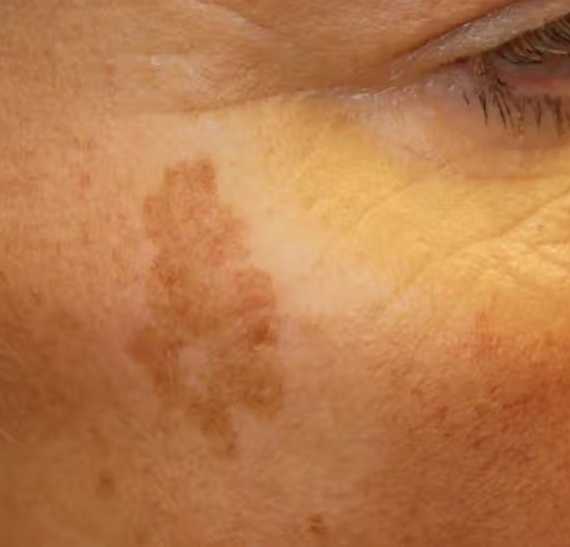
What Does Sun Damaged Skin Look Like?
Sun damage on your skin shows as flat spots of tan, brown, or dark brown that are oval to round in shape.
They most often first appear on the left side of your face, the side of your face most exposed to the sun while driving.
They’re called sun spots, liver spots, and age spots, and they are just one indicator of sun-damaged skin.
Sun damage, also called photoaging, is caused by excessive UV light exposure that prematurely ages your skin.
Signs of sun damage include:
- Spots of darker pigmentation
- Fine to medium wrinkles
- Less elastic, sagging skin
- Rough, uneven skin texture
- Redness and blotchiness
If you would like to erase sun damage and restore more youthful looking, healthier skin, please book a complimentary consultation.
There’s no cost, and there’s no obligation. During your appointment we’ll discuss your concerns and the best treatment options given all things.
Sun Damage Treatments
Successfully treating sun damage is two-fold process. The first step is to make sure you’re not causing more.
That means making sure you’re mindful of your sun exposure and wearing a quality mineral (physical barrier) sunscreen.
If you’re a sun worshipper and want lasting results, you’ll have to change your sun exposure and sunscreen habits.
The next step is determining which treatment regime will be most successful for you.
Sun damage, meaning evidence of collagen destruction and skin pigment dysfunction, manifests in hyperpigmentation, lax skin, and distressed skin.
The best sun damage treatment for you needs to be determined by considering your age, overall health, downtime preferences, and treatment objectives.
Because of this, we require a complimentary consultation for sun damage treatments.
There’s no cost, and there’s no obligation.
During your appointment, we’ll discuss your concerns and treatment options.
We understand we are not the right fit for everyone, and we do refer out when we think a different specialist will be of more help.
Below are some of the treatment options for sun damaged skin.
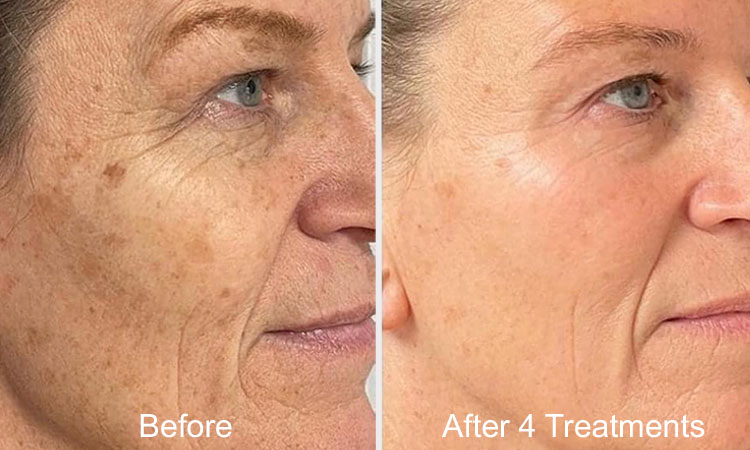
Procell Microchanneling for Sun Damage
Procell Therapies Microchanneling combined with medical grade human stem cell science delivers results people notice.
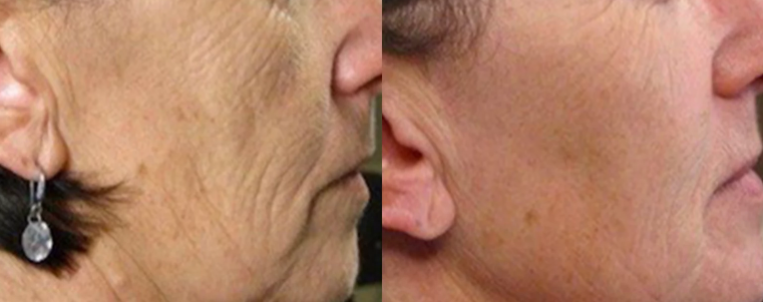
Tixel Skin Resurfacing for Sun Damage
Tixel skin resurfacing is good for treating collagen loss and remediating skin surface level hyperpigmentation like sun spots.
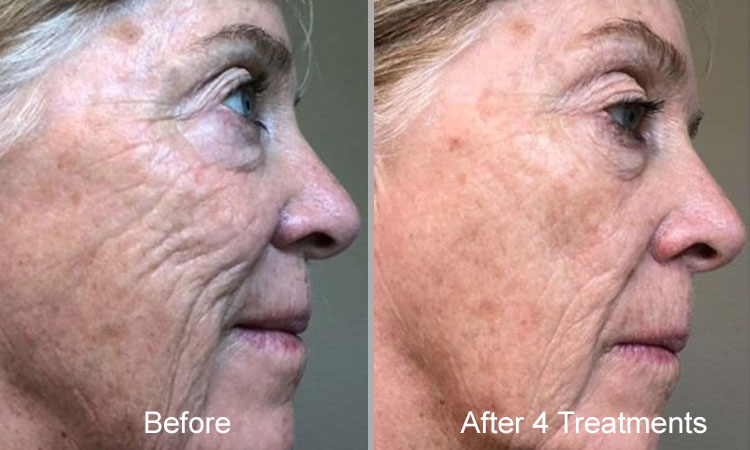
Medical Microneedling for Sun Damage
Medical microneedling is particularly good for treating glycated (thick) skin.
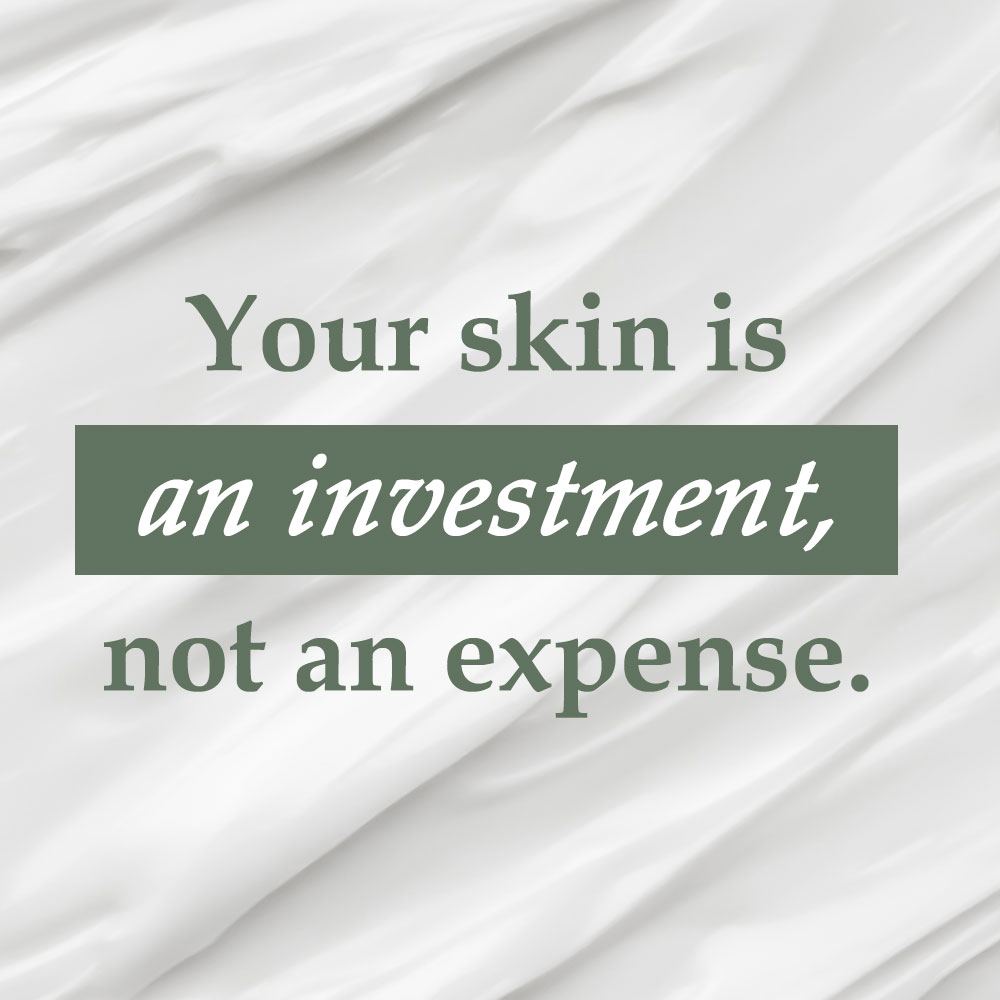
Not sure which treatment and/or product is best for treating your sun damage? Book a complimentary consultation.
There’s no cost, and there’s no obligation. During your appointment we’ll discuss your concerns and treatment options.
We understand we are not the right fit for everyone, and we do refer out when we think a different specialist will be of more help.
FAQs for Sun Damage Treatments
#1. What are the signs of sun-damaged skin?
Sun damage (photoaging) is caused by excessive UV light exposure that prematurely ages your skin. Signs of sun damage include spots of darker pigmentation (sun spots, liver spots, age spots), fine to medium wrinkles, less elastic and sagging skin, rough and uneven skin texture, and redness and blotchiness. Sun spots typically appear as flat spots of tan, brown, or dark brown that are oval to round in shape, often first appearing on the left side of your face (the side most exposed to the sun while driving).
#2. What is the process for treating sun damage effectively?
Successfully treating sun damage is a two-fold process. The first step is prevention: being mindful of sun exposure and wearing a quality mineral (physical barrier) sunscreen to prevent further damage. If you want lasting results, you’ll need to change sun exposure and sunscreen habits. The second step is determining which treatment regime will be most successful for your specific situation, considering factors like your age, overall health, downtime preferences, and treatment objectives.
#3. What treatment options does Rejuvience Med Spa offer for sun-damaged skin?
We offer several treatment options for sun-damaged skin:
Procell Microchanneling combined with medical-grade human stem cell science
Tixel Skin Resurfacing, which is effective for treating collagen loss and remediating skin surface-level hyperpigmentation like sun spots
Medical Microneedling, which is particularly good for treating glycated (thick) skin
#4. Why is a consultation required before starting sun damage treatments?
Rejuvience Med Spa requires a complimentary consultation for sun damage treatments because the best approach varies significantly between individuals. Sun damage manifests in hyperpigmentation, lax skin, and distressed skin, and the most effective treatment needs to be determined by considering your age, overall health, downtime preferences, and treatment objectives. During the no-cost, no-obligation appointment, they’ll discuss your concerns and treatment options, and they may refer you elsewhere if they believe a different specialist would be more helpful.
#5. How does sun damage affect the skin and what exactly is it?
Sun damage, also called photoaging, is caused by excessive UV light exposure that prematurely ages your skin. It manifests as evidence of collagen destruction and skin pigment dysfunction, resulting in hyperpigmentation, lax skin, and distressed skin. This damage shows up as dark spots, wrinkles, reduced elasticity, uneven texture, and redness. While there are treatments available to remediate sun-damaged skin, the approach needs to be personalized for the degree of damage, your age, and other individual factors.




